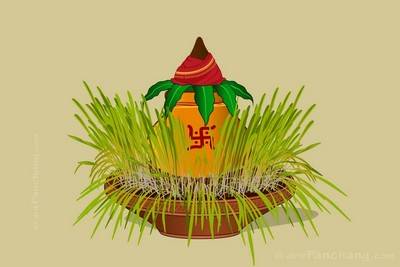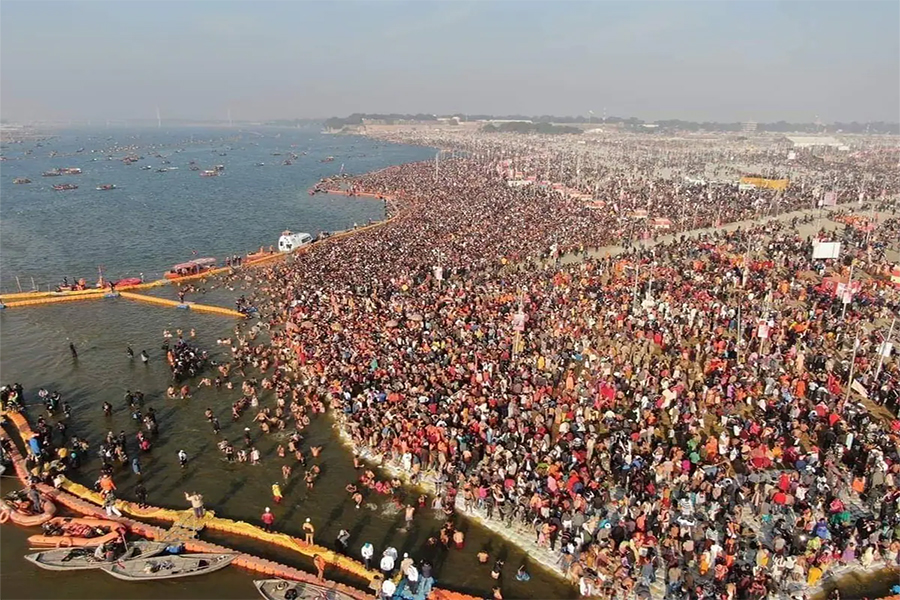Ghatsthapana
Ghatsthapana marks the official beginning of Dashain, Nepal’s biggest and longest festival, celebrated with great zeal and enthusiasm throughout the country. This festival is observed by Hindus not only in Nepal but also in India and other countries with significant Hindu populations. Ghatsthapana symbolizes the invocation of Goddess Durga, and the day holds immense cultural and religious significance.
Let’s explore what Ghatsthapana is all about, its rituals, and why it is such an important part of the Dashain celebration.
What is Ghatsthapana?
The word Ghatsthapana comes from two Sanskrit words: "Ghat" meaning pot or vessel, and "Sthapana" meaning installation. Together, it refers to the ritual of installing a holy pot that symbolizes the goddess Durga and her blessings for health, wealth, and protection. The installation of this sacred vessel sets the stage for the upcoming nine days of worship known as Navaratri, where different forms of Durga are worshipped.
The day of Ghatsthapana typically falls on Ghatasthapana Tithi, the first day of the bright lunar fortnight of Ashwin in the Nepali calendar, aligning with late September or early October in the Gregorian calendar.
Rituals of Ghatsthapana
The Ghatsthapana ritual is usually conducted early in the morning, and it must be performed at a precise auspicious time determined by astrologers. Here’s a step-by-step guide to how the ritual unfolds:
1. Setting Up the Kalash (Sacred Pot)
A Kalash, filled with holy water, is placed in the prayer room or a designated sacred space. The Kalash represents Durga in her most powerful form, and it is often decorated with flowers, sacred threads, and leaves of sacred plants such as mango or barley. On top of the Kalash, a coconut is placed, and it is covered with a red or white cloth symbolizing the goddess's presence.
2. Planting the Jamara Seeds
The ritual also involves planting Jamara (barley or maize seeds) in a sand-filled pot next to the Kalash. Jamara is a key component of the Dashain celebration, and the young barley shoots grown from the seeds are considered a sacred offering to the goddess. Devotees water the seeds every day, allowing the shoots to grow over the nine days of the festival, symbolizing growth, prosperity, and renewal.
3. Chanting Prayers and Invoking Durga
As the Kalash and Jamara are set, Vedic mantras and prayers are chanted to invoke Durga and other deities. The goddess is asked to bless the household with peace, protection, and prosperity for the coming year. In some families, priests are invited to perform the Ghatsthapana ceremony, while in others, it is carried out by the eldest member of the family.
Cultural and Religious Significance
The day of Ghatsthapana not only sets the tone for the festive season but also carries deeper religious meanings:
-
Symbol of Prosperity: The Kalash and Jamara represent the balance of nature and the hope for an abundant harvest, as Dashain coincides with the post-monsoon harvest period in Nepal.
-
Invocation of Divine Power: By establishing the Kalash, devotees are inviting Durga into their homes, seeking her power to overcome negative forces in life, just as the goddess defeated the demon Mahishasura, whose defeat is celebrated during Dashain.
-
Unity in Families: The Ghatsthapana ritual brings families together, uniting generations under one roof. Many who have moved away for work or studies make it a point to return home for Dashain, starting with Ghatsthapana. This day serves as a reminder of the importance of family and tradition.
The Significance of Jamara in Dashain
Jamara is an integral part of the Dashain festival. As the barley or maize shoots grow taller, they are seen as a sign of good fortune. On the tenth day of Dashain, known as Vijaya Dashami, these shoots are placed behind the ears of family members during the Tika ceremony, where elders bless the younger generations with tika (a mixture of rice, yogurt, and vermillion) and Jamara.
The golden-green color of Jamara symbolizes prosperity, vitality, and the blessings of Durga, encouraging everyone to embrace the positive energy that the goddess represents.
Conclusion
Ghatsthapana is much more than the simple act of planting seeds or installing a pot; it is a revered cultural and spiritual practice that binds people together. It signals the arrival of Dashain and reminds everyone of the strength, resilience, and grace of Goddess Durga. As the seeds sprout and the festival progresses, Ghatsthapana serves as a reminder of the eternal cycle of life, growth, and devotion.
May this Dashain bring joy, prosperity, and peace to all, as the blessings of Durga flow into our lives.





0 comments
Write a Reply or Comment